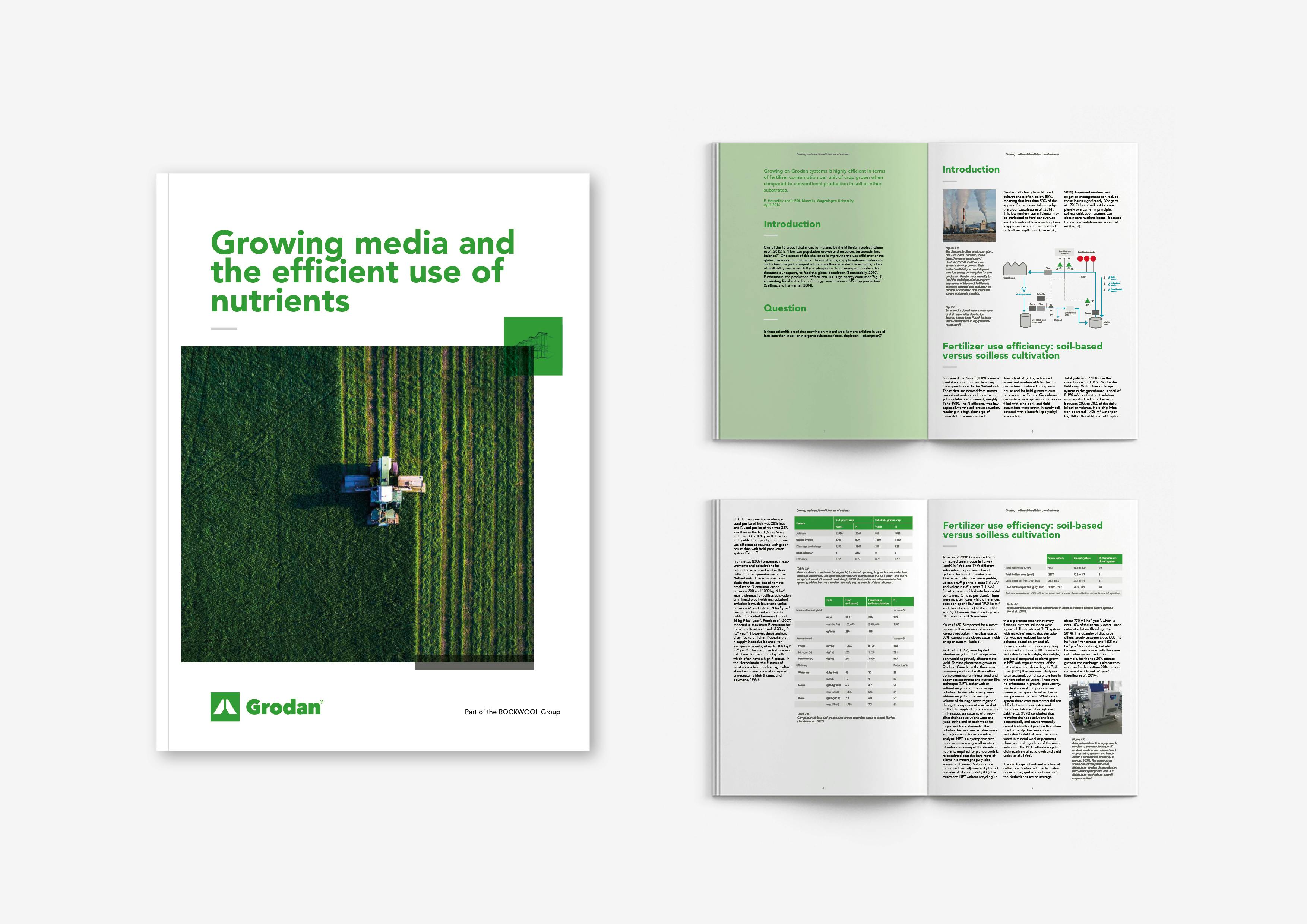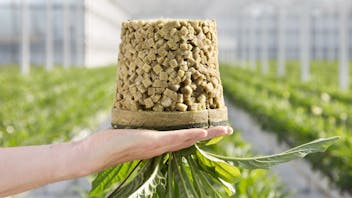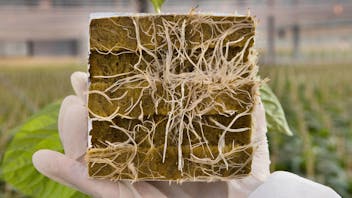Nutrient recovery makes sense economically and environmentally. Why would you discharge valuable nutrients when they can be used again? Furthermore by accurately managing nutrient levels growth disorders can be avoided, crop growth and yield optimized. This chapter outlines the importance of individual nutrient elements and details how they need to be management in the irrigation system. Essential nutrients for crop growth Sixteen elements Plants require 16 elements to be able to grow. Those elements are carbon (C), hydrogen (H), oxygen (O), nitrogen (N), phosphorus (P), potassium (K), calcium (Ca), magnesium (Mg), sulphur (S), iron (Fe), manganese (Mn), boron (B), zinc (Zn), copper (Cu), molybdenum (Mo) and chlorine (Cl). The plant is able to take up carbon and oxygen from the surrounding air and hydrogen from the irrigation water. The other thirteen elements have to be added to the irrigation water. You can add them via a hydroponic nutrient solution in which the different elements are present in the right ratios. It is important to know what the role of each element has in plant development in order to adapt the nutrient mixture to the needs of the plant.
Macro and micro nutrients
The nutrients mentioned above are divided into macro and micro nutrients. The division is somewhat arbitrary but in general macro nutrients are required in larger quantities than micro nutrients. Nitrogen, phosphorus, potassium, calcium, magnesium and sulphur are macro nutrients. Iron, manganese, boron, chlorine, zinc, copper and molybdenum are micro nutrients. The functions of the nutrients vary. Nitrogen is an important element for plant growth. It is the nutrient that is responsible for the development of leaf area. Phosphorus is responsible for cell division and energy transfer reactions during photosynthesis. Potassium is important for the quality and quantity of fruits. Calcium is used in the development of new cell walls. Magnesium is the central element in the chlorophyll molecule: without this nutrient, photosynthesis would not be possible. Sulphur plays a major role in synthesis of amino acids. Chlorine is the nutrient involved in the evolution of oxygen during the photosynthetic process and is essential for cell division in roots and leaves. It also helps in the uptake of other elements, especially calcium. Iron is another element needed for chlorophyll synthesis and manganese is also required for photosynthesis. Boron is an element of the plant cell wall and is needed for sugar metabolism and transport, flowering, fruit set and seed development. Zinc is an element important in the early growth phase and development, while copper activates enzymes and has an influence on nitrogen metabolism. Finally, molybdenum is a component of nitrate reducing enzymes.

Download the Whitepaper about Growing media and the efficient use of nutrients

Download The Best Practice Guidelines for Greenhouse Water Management
The guide has been written to provide greenhouse owners and managers with an overview of current best practice.







